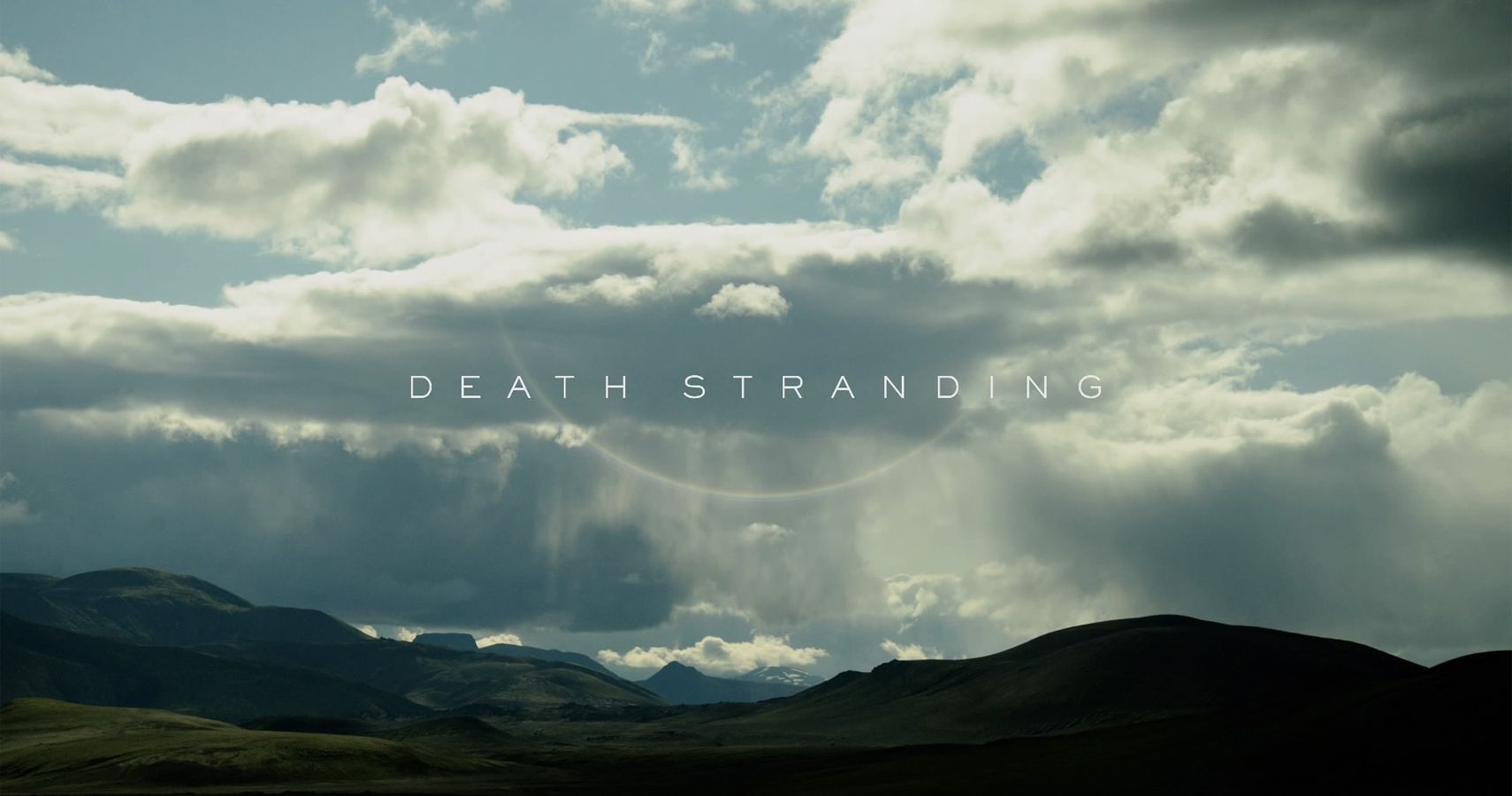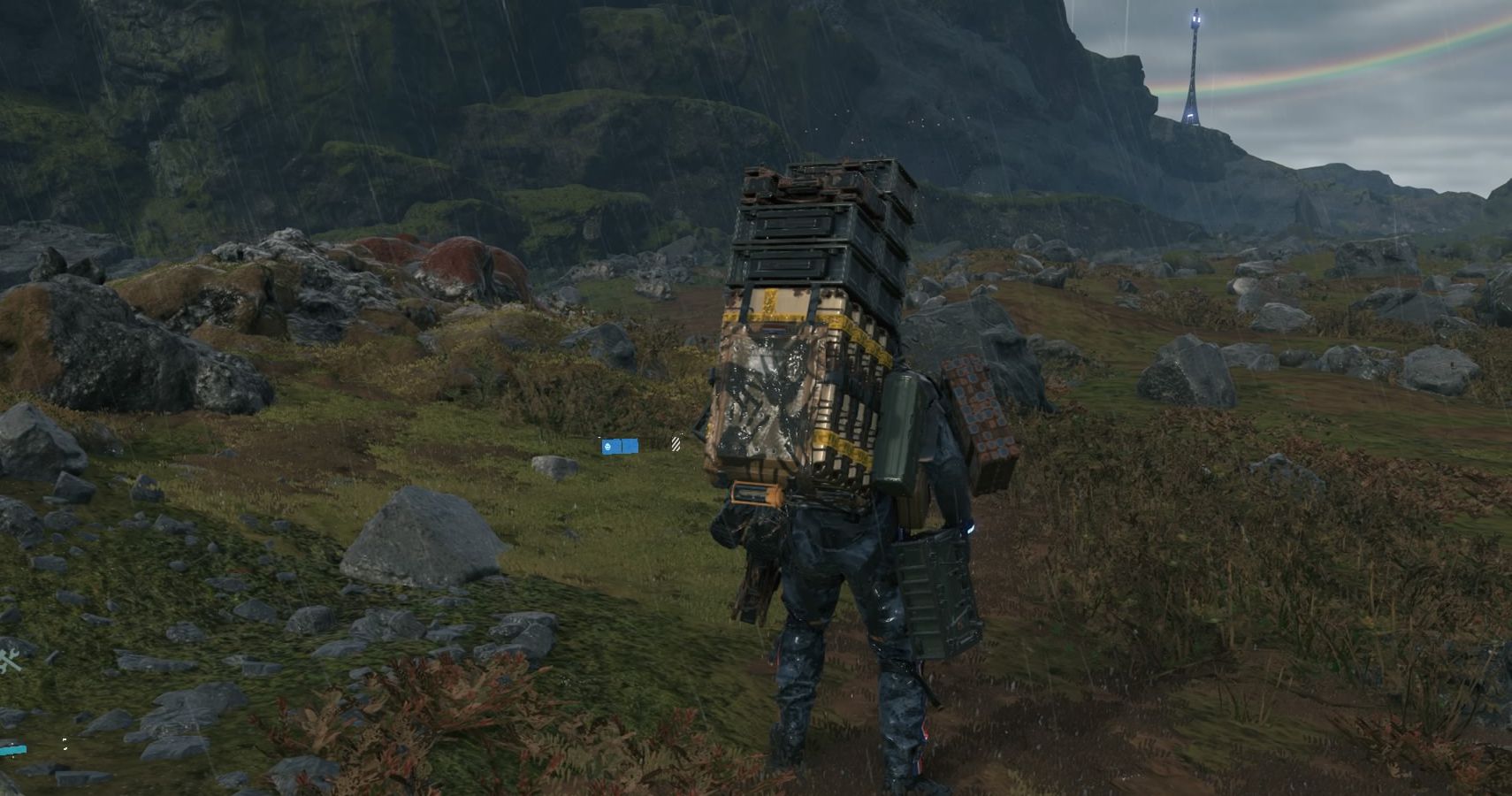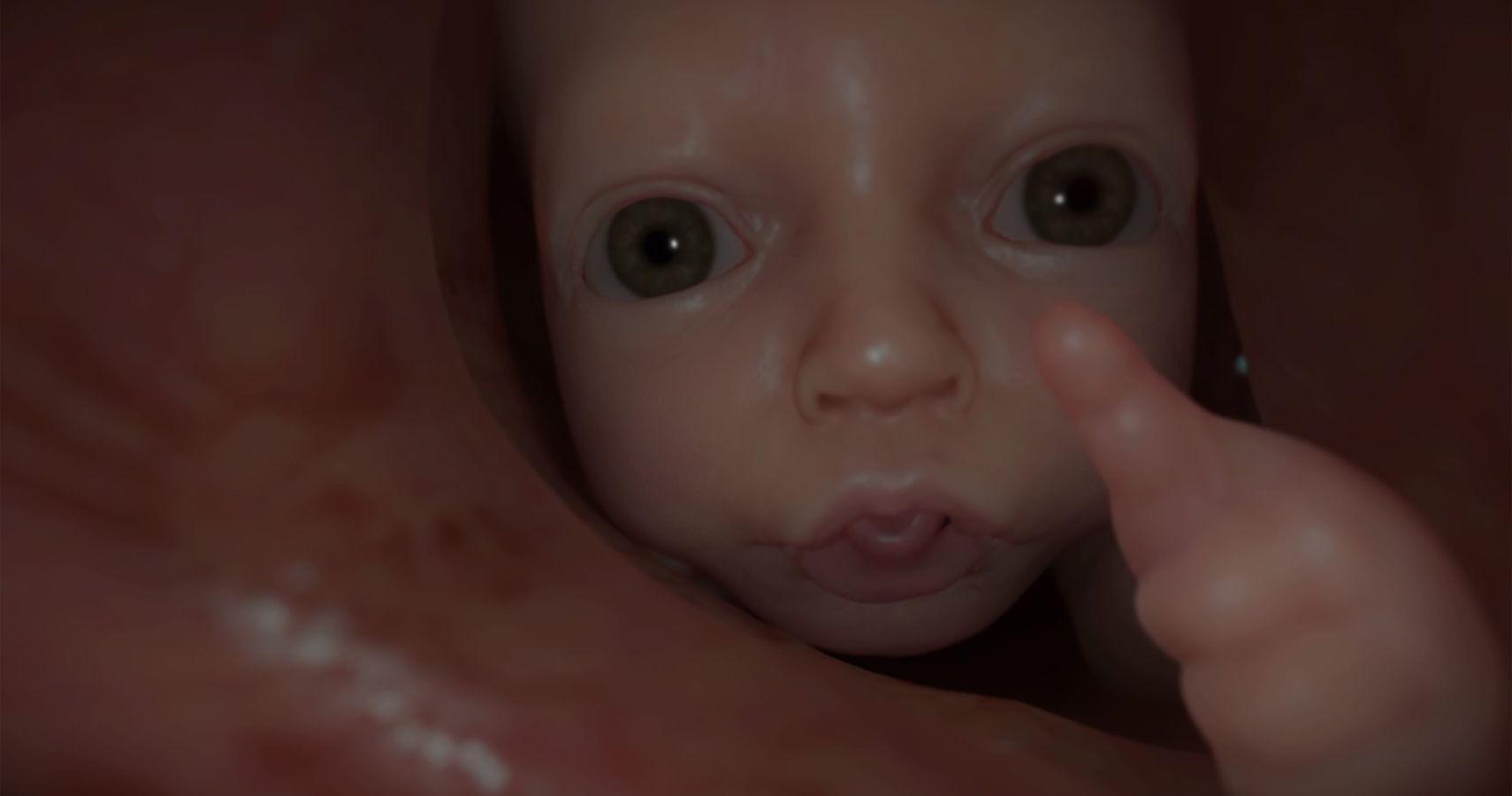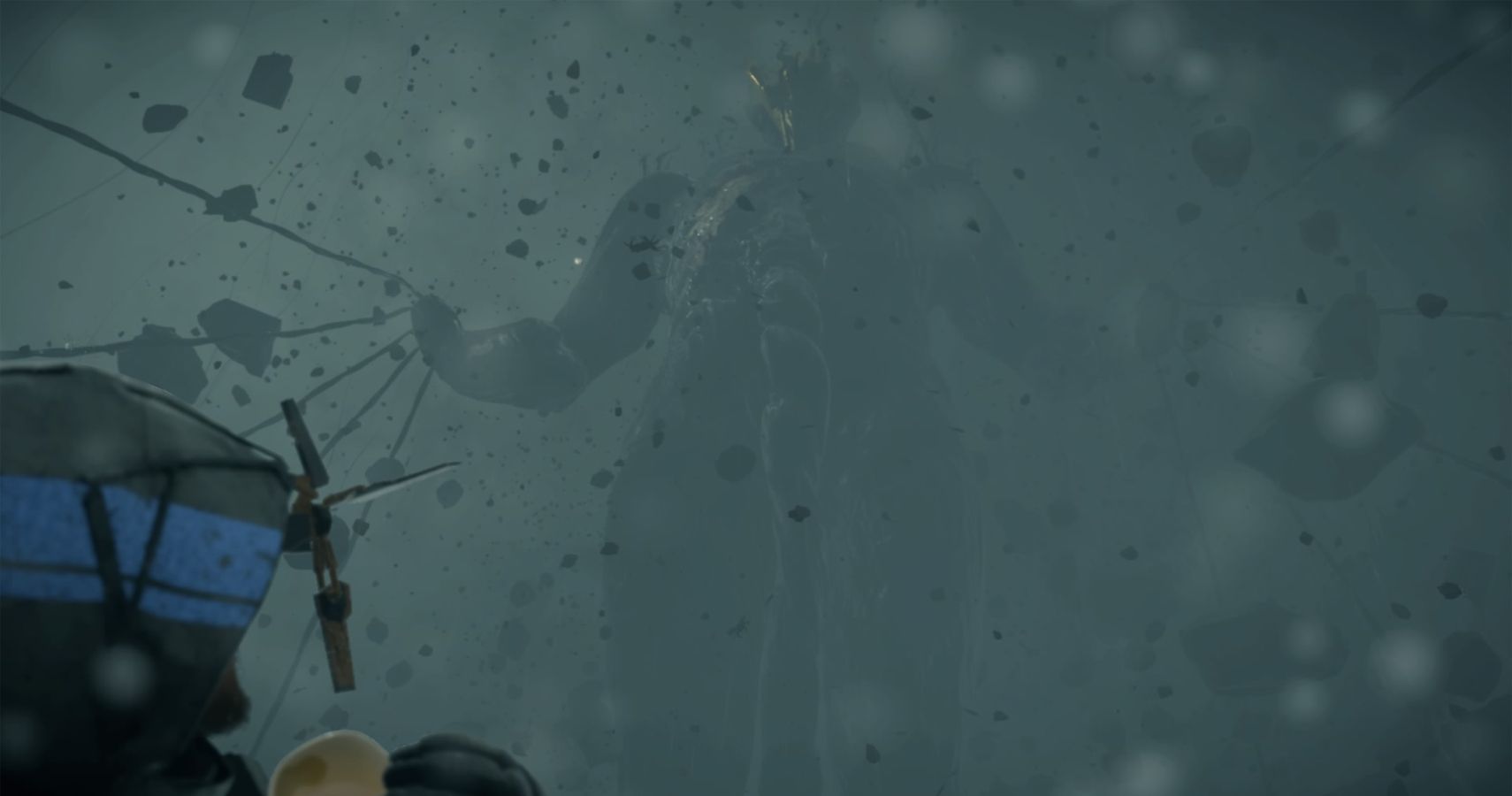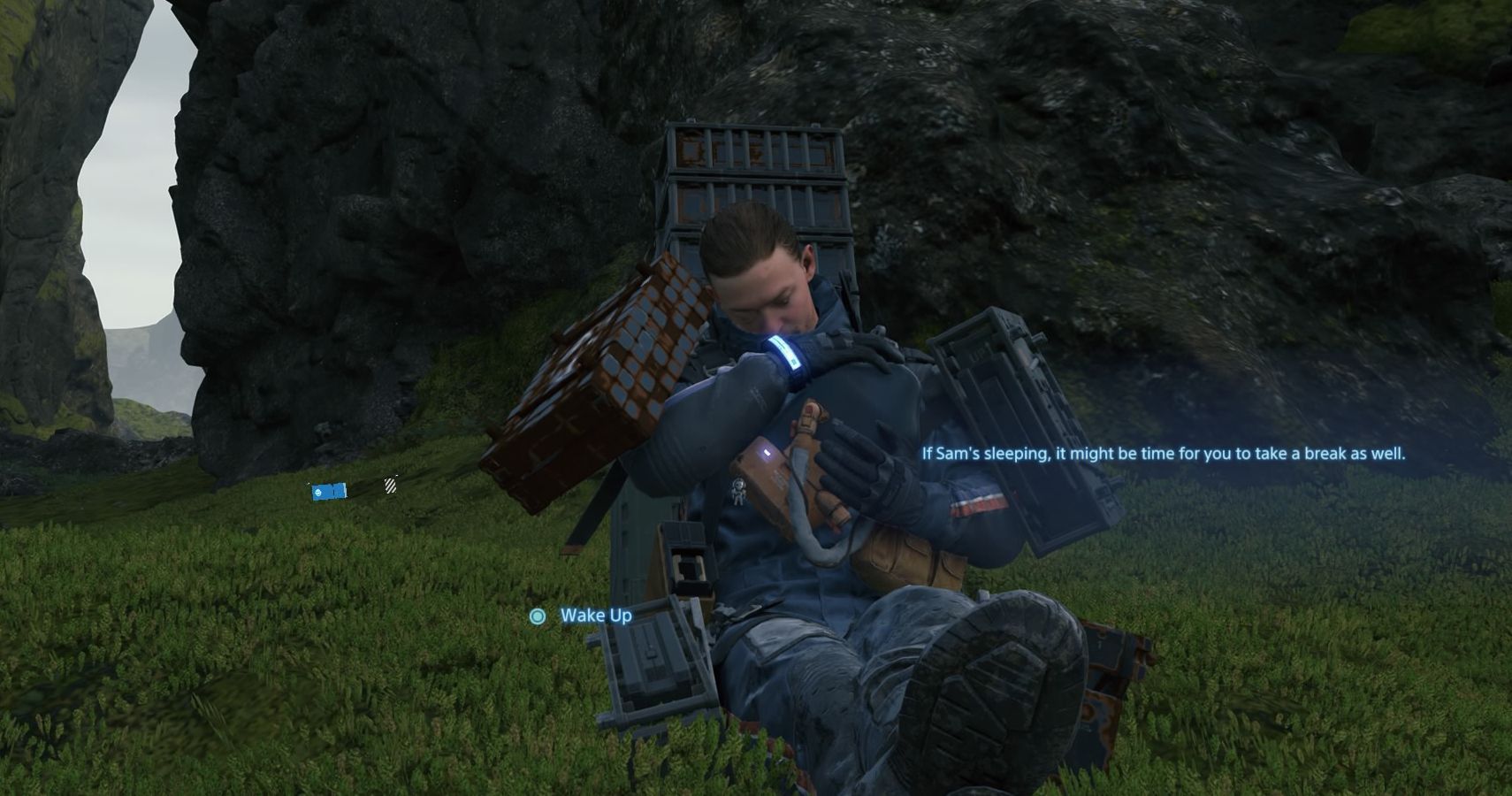During the buildup to its release, Death Stranding was arguably one of the most talked about titles within the gaming industry. The hype more or less began with the drama of Hideo Kojima’s split with Konami, not to mention the untimely tragedy that befell what many believed to have been a perfect horror game in Silent Hills. Sprinkle all of that with the countless mentions of Kojima’s iconic (and iconically weird) Metal Gear series, and it’s easy to understand just how wildly anticipated Death Stranding was.
Considering the fact that I’m the editor for a video game news site, you would certainly think that I would have had far more insights going into my Death Stranding playthrough for this review. That, however, could not be further from the truth. Much like I do with any movie that I’m over-the-moon excited for, whenever possible, I deliberately avoided as much Death Stranding content as I could so that I could experience the game on my own accord without any positive or negative pre-existing biases (I couldn’t avoid it all, of course). You see, Metal Gear Solid is one of my all-time favorite games, as were the ensuing sequels. Surely, a new IP from the same director would be just as impressive and captivating, right?
Death Stranding provides an emotional, unexpected experience with stunning visuals and a long (very long) dreamlike narrative from the mind of one of gaming’s most celebrated creators. It was also an experience that I really had no inclination to finish, other than for review purposes.
Crazy Town
Death Stranding takes place in an apocalyptic United States that has been overrun by deadly apparitions linked to the afterlife known as “BTs”, thanks to the massive, crater-producing voidouts (explosions) that are caused when the BTs consume the dead through necrosis. Rains known as “timefall” also wreak havoc on the living, rapidly aging anything it touches and causing substantial deterioration unless protected by special gear. Many of the remaining humans are scattered across the map in colonies known as KNOTs, while others make up the terrorist group known as the Homo Demens.
Players take on the role of Sam Bridges, a courier who winds up being tasked as the sole person who can reconnect all of the remaining colonies of America together through what’s known as the Chiral Network. Sam is an ideal choice for such a mission thanks to his DOOMs ability, which allows him to sense when he is in close (and dangerous) proximity to a BT. Sam is also aided by a BB, or Bridge Baby, which is a living device that allows Sam to see the BTs as well. Not to mention, Sam is a Repatriate, meaning he can come back from death, though not without certain consequences
RELATED: Monster Energy's Stocks Rose The Day Death Stranding Came Out
As crazy and confusing as that sounds, there’s a whole lot more to it than that. But that shouldn’t be surprising considering the story was developed by Hideo Kojima, who is known for his “out there” form of storytelling.
Death Stranding’s story has everything one might expect from a Kojima game. The dystopian Sci-Fi setting provides the director plenty of room to work with in his depiction of the connection shared between life and death. Experiencing that connection in-game is a mind-bending occurrence, while also being incredibly satisfying. Similar to his other games - which I’ll touch on more in a bit - crazy creatures and futuristic technology that only Kojima could dream up are all ripe for the picking. Those familiar elements, however, barely scratch the surface of what Death Stranding provides in its story, which can be considered both a good and bad thing.
Death Stranding’s story takes players down the proverbial rabbit hole that is synonymous with most Kojima games. Once you think you finally have a firm grasp of what’s going on, the story flips upside-down to reveal a surprising twist or dynamic that takes you in a totally different direction.
These Boots Were Made For Walkin'
The problem is that in order to move the story along, players need to walk. A lot. As a courier, Sam spends all of his time running from point A to point B, traversing wide open spaces, steep cliffsides, and figuring out how to cross bodies of water without losing his balance or his cargo (even though it’s a pretty funny sight to see when it does happen). Death Stranding has been likened to a walking simulator, and that’s a pretty accurate depiction. While there are certain situations that require more strategy than just walking, such as encounters with bandits and BTs, the amount of walking is tedious. It feels like the amount of walking is meant to add a deep emphasis on the weight of the situation. While that decision can be appreciated, it mostly just feels unnecessary.
Along the way, players will encounter structures and other helpful items that have been left by other actual players, such as a cliffside rope to climb or a ladder in place to easily cross over a river. I admittedly did not enjoy the mechanic at first, as I felt like I would have preferred to figure things out on my own. However, I eventually came to appreciate coming across the items, as it provided a feeling that I was not actually alone in the lonely, broken world. The ability to “like” others’ equipment also provided a feeling of community, which was no doubt part of the game’s overarching theme of reconnecting people to each other. It was also pretty awesome to receive in-game notifications when another player liked one of my structures.
For those who have played any of the games in the Metal Gear Solid series, movement and combat controls, along with the overall game interface, will feel immediately familiar. There’s a lot to take in at first, but eventually, everything becomes second nature.
Odd Design Choices (Even For Kojima)
In some of the more intriguing walking moments that featured appropriately ambient musical tracks that perfectly matched the game’s aesthetic, the game broke its immersive it held over me by showing the musical artist and track name directly on the screen. While that is no doubt an awesome thing for the artist, it seems like an odd design decision.
It also kind of makes sense, though, especially considering the game’s cast. Death Stranding is a who’s who of Kojima’s best friends, including everyone from Guillermo del Toro to Nicolas Winding Refn. With such an impressive roster, it’s no surprise that the acting and voice over talent is superb, particularly (though unsurprisingly) Mads Mikkelsen whose performance is one of the highlights of the game. There are some certain vocal elements that are bit obnoxious - mainly related to the codec conversations in which Sam is talked at, rather than with - but for the most part, the overall audio design is on point.
The Elephant In The Room
While Death Stranding shares plenty of elements that can be found in other Kojima games, it can’t be said enough that this game is NOT Metal Gear Solid, nor is it a substitution for the ill-fated Silent Hills, even though it stars the same actor in Norman Reedus. Those expecting anything related to either of those titles will be sorely disappointed.
Death Stranding is far more of an artistic undertaking than Kojima’s previous games. The game has its action, but nothing compared to the Metal Gear Solid series. The game has a surprising amount of genuinely well-executed scares, but is certainly not on the same level as Silent Hills looked to have been. It’s unfair to criticize the game based on those kinds of comparisons. It’s fair Kojima to dismiss the negative opinion in that regard, but it’s overly simplistic and petty of him to say that Americans can’t appreciate the game because it’s not a shooter. It’s just a different type of game. Going in with that understanding is really the only way to appreciate Death Stranding for what it is.
There’s no doubt that the game effectively invokes emotions. For me, these emotions were especially prevalent during any of the interactions with Sam’s BB. Maybe it’s because I have a 3-month-old myself, but Sam’s relationship with the BB made me care about its well-being as well. If it was ever stressed by a situation, I did everything I could to soothe it.
Bring On The Movies
As mentioned above, this review barely scratches the surface of what Death Stranding has to offer. The story’s theme of reconnecting humanity is shoved down players’ throats, but done so during the actual gameplay in a way that’s meaningful. Unfortunately, actually getting to those moments takes a lot of unnecessary time spent wandering.
If Death Stranding were a movie, it undoubtedly would have been a hit, which is a good sign for Kojima Productions’ move into the cinematic space. Though the video game has enough spectacular moments to earn a passing grade, the amount of downtime keeps it from receiving a glowing recommendation.
A PlayStation 4 copy of Death Stranding was purchased by TheGamer for this review. Death Stranding is now available on the PlayStation 4 and will be released on PC next year.
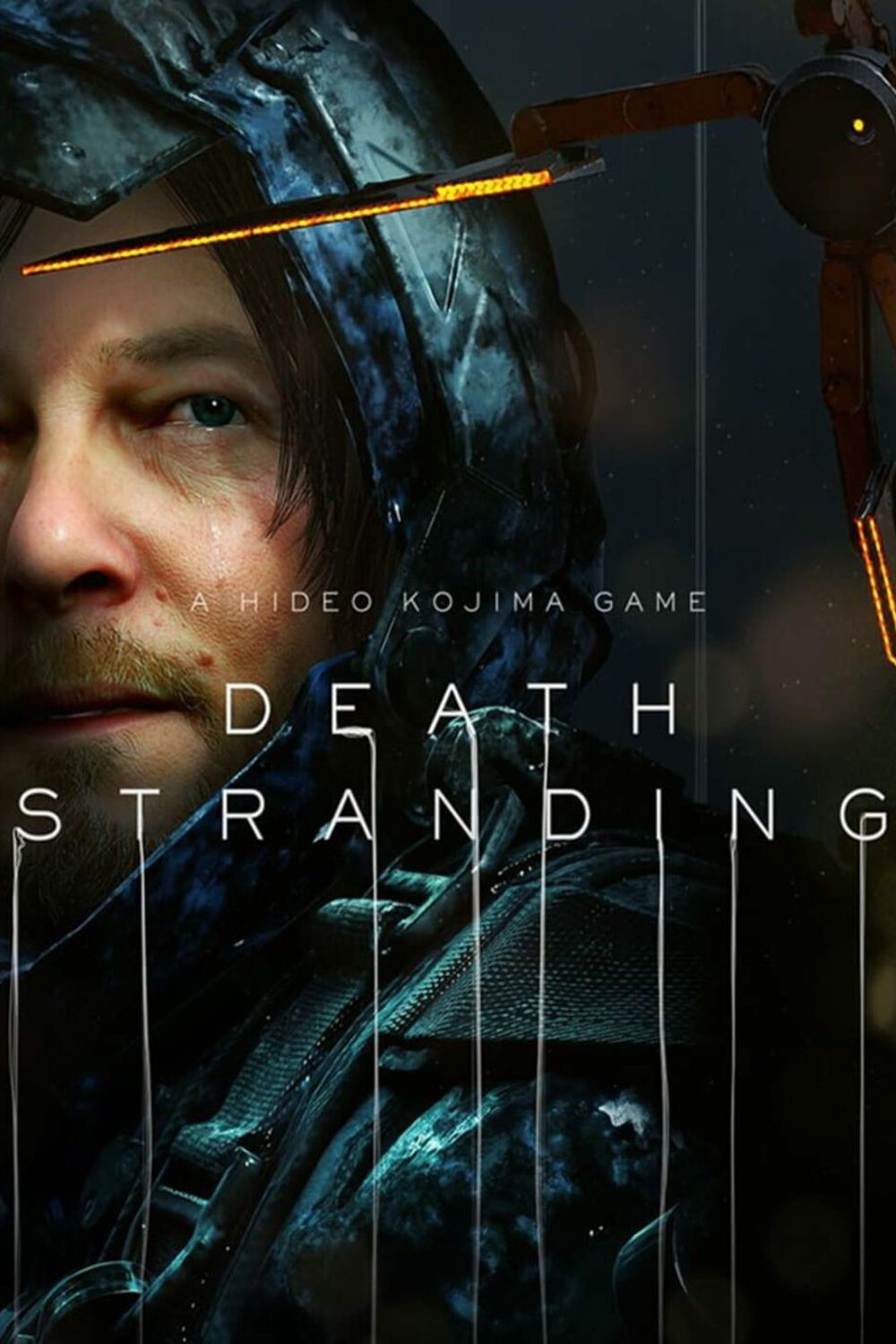
Death Stranding
From the mind of Metal Gear Solid creator Hideo Kojima, Death Stranding is an action game that first launched in 2019. Set in a world devastated by unknown explosions and supernatural consequences, Sam Bridges must travel the country and reconnect society.
READ NEXT: Mortal Kombat Reboot Movie Adds Nitara, The Vampire

